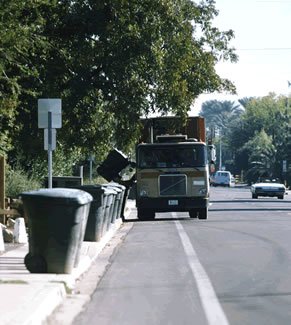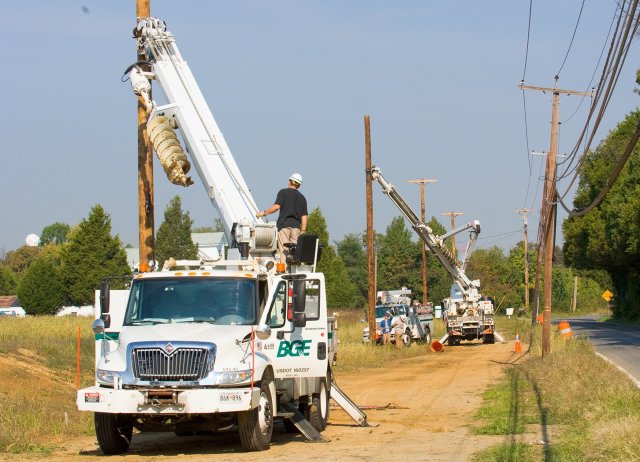Guidelines and Permitting for Livestock Anaerobic Digesters
Biogas recovery systems that use anaerobic digestion are sophisticated systems. To help you plan and optimize your anaerobic digester, AgSTAR provides the following information:
Anaerobic Digester Guidelines
These resources can help you evaluate anaerobic digester designs, build and implement an anaerobic digester, and operate and maintain the system:
- AgSTAR Handbook: A Manual For Developing Biogas Systems at Commercial Farms is a comprehensive manual that provides guidance on developing biogas recovery systems at commercial farms.
- Anaerobic Digester Conservation Practice Standard No. 366 (PDF) (7 pp, 84K) provides technical guidelines for plug flow digesters, complete mix digesters, and covered lagoons (USDA Natural Resources Conservation Service, 2009).
- Common Safety Practices for On-Farm Anaerobic Digestion Systems identifies major hazards associated with anaerobic digesters and outlines practices to ensure a safe work environment for farms with these systems.
Codigestion Guidelines

Codigestion occurs when more than one type of organic waste is fed into an anaerobic digester. Codigestion can increase methane production from low-yielding or difficult to digest farm-based feedstocks.
- Increasing Anaerobic Digestion Performance with Codigestion fact sheet answers basic technical questions about codigestion
Codigestion Feedstocks
Codigestion feedstocks can be collected from other nearby sources including restaurant or cafeteria food wastes; food processing wastes or byproducts; fats, oil and grease from restaurant grease traps; energy crops; crop residues; and others. Codigestion feedstocks should be carefully selected to enhance—not inhibit—methane production.
Testing potential codigestion feedstocks helps owners understand the potential for biogas production, effects on methane production and other attributes. Methods for testing attributes of codigestion feedstocks include:
Biochemical Methane Potentials (BMPs)
Biochemical Methane Potentials (BMPs) predict the amount of biogas and/or methane production from the codigestion substrate
- Evaluation of the "ultimate" anaerobic biodegradability of organic compounds in digested sludge, Method by measurement of the biogas production (ISO Standard 11734: 1995)
- Faivor, L., and D. Kirk. (2011). Statistical verification of a biochemical methane potential test. In Proceedings of American Society of Agricultural and Biological Engineers, Louisville, Kentucky
Anaerobic Toxicity Assays (ATAs)
Anaerobic Toxicity Assays (ATAs) predict whether the codigestion substrate inhibits biogas and/or methane production
- General test to determine inhibition of gas production of anaerobic bacteria; can provide information that helps predict the likely effect of a test material on biogas production in anaerobic digesters (ISO Standard 13641-1:2003)
- Test for low biomass concentrations can help estimate the potential effects of chemicals and wastewater to anaerobic processes in habitats with relatively low anaerobic biomass (ISO Standard 13641-2:2003)
Total Solids and Volatile Solids
- Solids, Standard Methods 2540 (cost: $75) provides methods for estimating total solids, fixed and volatile solids, and settleable solids
- Solids Residue, EPA Method 160.4 for approximating the amount of organic matter in the solid fraction of sewage, activated sludge, industrial wastes or bottom sediments
Alkalinity or pH
Alkalinity or pH levels should be as close to neutral as possible in the digester environment
- Alkalinity, Standards Methods 2320B (cost: $75) is a method for determining alkalinity in water
- Determination of pH, ISO 10523:2008 (cost: ~US$90) is a method for determining the pH value in liquid sludge
- Standard Test Methods for Acidity or Alkalinity of Water, ASTM D1067-16 (cost: $43) is a method to determine acidity or alkalinity of all types of water
Chemical Oxygen Demand (COD)
- Determination of COD, EPA’s Method 410 determines COD in ground and surface waters, domestic and industrial wastes
The composition of feedstocks in anaerobic digesters also has a significant influence on the biogas produced. This resource discusses energy from common codigestion feedstocks:
- Basics of Energy Production through Anaerobic Digestion of Livestock Manure (PDF) (6 pp, 684K) Department of Agricultural and Biological Engineering, Purdue University
Laboratories that Conduct Testing of Anaerobic Digester Feedstocks
To find a university or private laboratory that tests anaerobic digester feedstocks, contact your system designer for references or contact your state university’s agriculture department.
Interconnection Guidelines

Interconnection is the physical linking of a biogas recovery system to the electrical power grid. Biogas recovery systems connected to the electrical power grid generate renewable energy, which is distributed to energy consumers on the grid. The sale of electricity can generate revenue for biogas recovery system owners. Additionally, renewable energy certificates (RECs) and other environmental credits can be earned from producing and distributing the energy.
AgSTAR's Interconnection Guidelines fact sheet provides general guidance for connecting a biogas recovery system to the electrical power grid.
Permitting
Anaerobic digesters must meet local, state and federal regulatory and permitting requirements for air, solid waste and water. These requirements are in addition to permitting requirements for Concentrated Animal Feeding Operations (CAFOs). Anaerobic digester permit requirements vary by location and change frequently. Local, state and federal resources can help you navigate the permit process.
